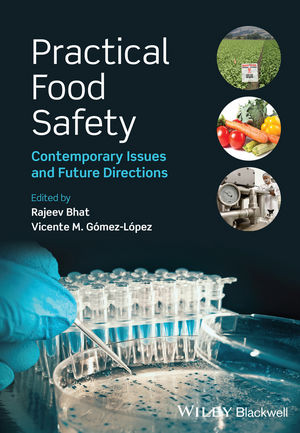A Trial Lawyer’s Guide to the New FTC Green Labeling Guidelines

Consumer and market demands for sustainability played a part in bringing packaging into the food safety system. For example, increased pressure to use recycled material in food packaging has led to unintended consequences like those revealed by 2011 Swiss research regarding the unsafe migration of mineral oil from recycled paper and cardboard into foodstuffs. While the food safety community strives to bring packaging under Hazard Analysis and Critical Control Points safety models, both packaging and food producers must now also consider the impact of the “Green Guides “recently issued by the Federal Trade Commission (FTC). The FTC’s guidance regarding package and product environmental claims can affect both food safety concerns and potential consumer action for false labeling. Because the purchases of eco-friendly consumers continue to be influenced by environmental packaging efforts, companies need to understand what’s at stake in deciding to adopt—or ignore—the guidance provided.
The Green Guides
The FTC issued the Green Guides late last year in order to provide guidance to marketers seeking to make claims about the environmental effects of products or product packaging. The goal is to guide companies away from making claims that are considered deceptive under the Section 5 of the Federal Trade Commission Act. The guides address a wide array of claims, such as “degradable,” “compostable,” “recyclable,” “free-of” and “nontoxic.” (Absent, however, is any guidance on marketing products as “organic,” “sustainable,” and “natural,”—terms that have been the subject of much false labeling litigation. In the FTC’s view, it lacked a sufficient basis to provide meaningful guidance and wanted to avoid proposing guidance that duplicates or contradicts rules or guidance of other agencies.)
According to the FTC, the Guides are not enforceable regulations and do not have the force and effect of law. Rather, they provide the basis for voluntary compliance and assist in guiding the public in conducting business in conformance with the law. The FTC warns that an environmental marketing claim should not be presented in a manner that overstates the environmental attribute or benefit, expressly or by implication.
Under the Guides, marketers should avoid implications of significant environmental benefits if the benefit is in fact negligible. Factors such as clarity of language, relative type size and proximity to the claim being qualified, in addition to an absence of contrary claims that could undercut effectiveness, will maximize the likelihood that the qualifications and disclosures are appropriately clear and prominent. Moreover, marketers should present environmental claims in a way that makes clear whether the environmental attribute or benefit being asserted refers to the product, the product’s packaging, a service or to a portion or component of the product, package or service. In general, if the environmental attribute or benefit applies to all but minor, incidental components of a product or package, the FTC says that the claim need not be qualified to identify that fact.
The Green Guides & Food Safety
Inevitably, marketers and packaging producers will have to work together to determine how to satisfy the Guides requirements. Under the Guides, any business making an express or implied claim that presents an objective assertion about the environmental attribute of a product, package or service must possess and rely upon a reasonable basis substantiating the claim at the time the claim is made. In the context of environmental marketing claims, “substantiation” requires competent and reliable scientific evidence, defined as tests, analyses, research, studies or other evidence based on the expertise of professionals in the relevant area, conducted and evaluated in an objective manner by persons qualified to do so, using procedures generally accepted in the profession to yield accurate and reliable results.
The information obtained fulfilling the Guides substantiation requirements will move the dial forward on the packaging industry’s efforts to increase food safety. Understanding the environmental impact tied to specific claims will also, necessarily, reveal packaging attributes that may have unintended food safety consequences—like the mineral oil’s unexpected contamination of packaging made from recycled newspaper printed with mineral oil-based inks.
The Green Guide & Consumer Class Action Claims
Manufacturers have seen an explosion of consumer class actions based on labeling or packaging claims and, as a result, cannot help but wonder what impact will the Green Guide will have on that kind of litigation. While not providing a guarantee, recent litigation suggests that complying with the Guides can give food and packaging manufacturers a significant weapon for avoiding, managing and winning consumer litigation based on claims of deceptive environmental package labeling.
For example, a recent false labeling case against Cocoa Cola over the name and label of its Pom Wonderful pomegranate juice ultimately failed because Coca-Cola had complied with Food and Drug Administration (FDA) regulations regarding flavored juice blends. The plaintiffs in the case claimed the name and labeling of the product created a false impression to consumers that the product is mostly pomegranate and blueberry juice but that, in reality, the product is a blend of juices that only contains small amounts of the named juices. The Ninth Circuit Court of Appeals, however, found that Coca-Cola could not be sued because it had followed FDA guidelines.
The Ninth Circuit said that courts “must generally prevent parties from undermining, through private litigation, the FDA’s considered judgments,” and noted that they lacked the FDA’s expertise in “guarding against deception in the context of juice beverage labeling.”
Though the Green Guides do not share the mandatory nature of the FDA regulations, the same reasoning regarding the role of compliance may find favor in defending against claims regarding environmental claims on food packaging. By the same token, companies who do not heed the advice of the Guides could find the guides used against them. Plaintiffs with false labeling claims are likely to point to a company’s lack of compliance as a flagrant disregard of industry standards and as evidence that the company’s labeling should be considered false, deceptive or misleading.
Conclusions
Food safety is always the paramount concern for everyone in the food production chain and—as is usually the case—compliance with regulations and standards increases assurances that what reaches the consumer meet those goals. When it comes the FTC’s recently issued Green Guide, following the guidance set forth by the FTC not only helps with foods safety concerns, it also likely provides a significant weapon in the defeat of any class action premised on the notion that environmental packaging or label claims somehow deceived or misled consumers.
Thomas Mahlum and Melissa Goodman are trial attorneys at Robins, Kaplan, Miller & Ciresi L.L.P. They represent members of the Food and Beverage sector in disputes addressing key industry issues like distribution, commercial contract disputes, brand protection, and intellectual property rights through all phases of dispute resolution including trial and high-stakes arbitrations. They can be contacted at tcmahlum@rkmc.com and magoodman@rkmc.com.
Looking for a reprint of this article?
From high-res PDFs to custom plaques, order your copy today!









